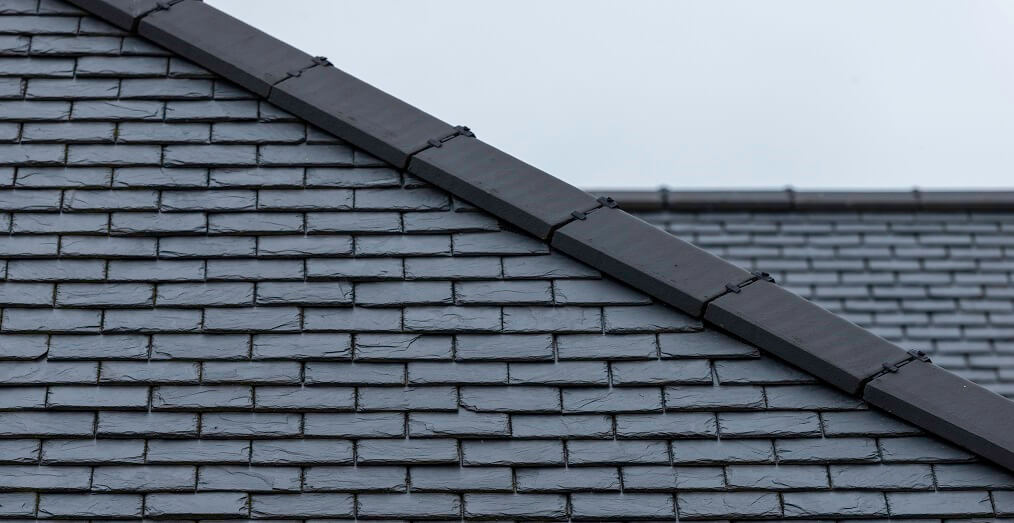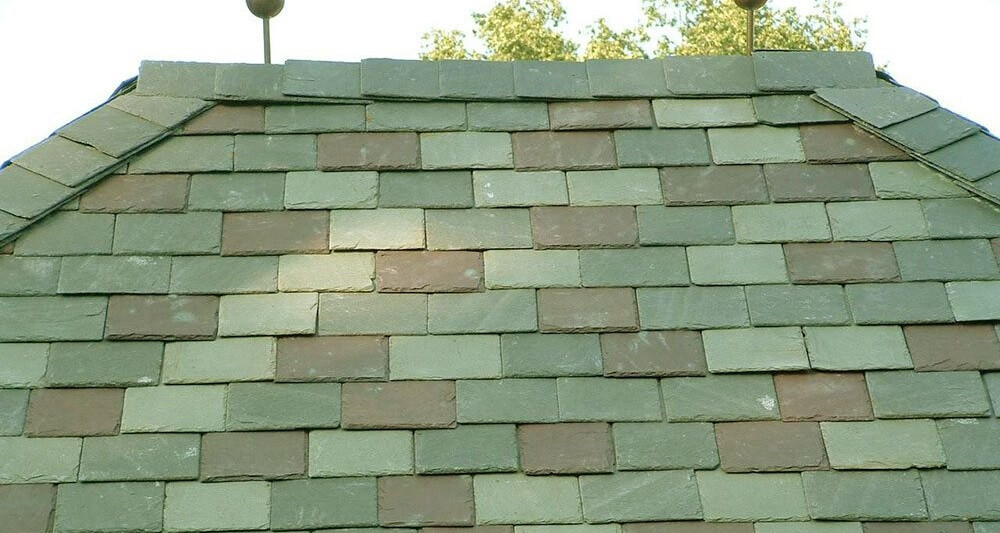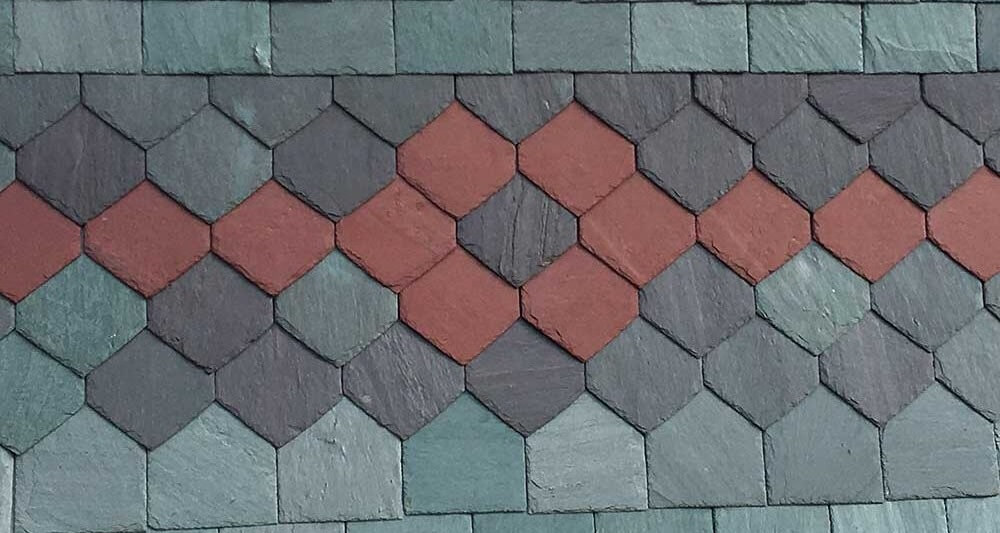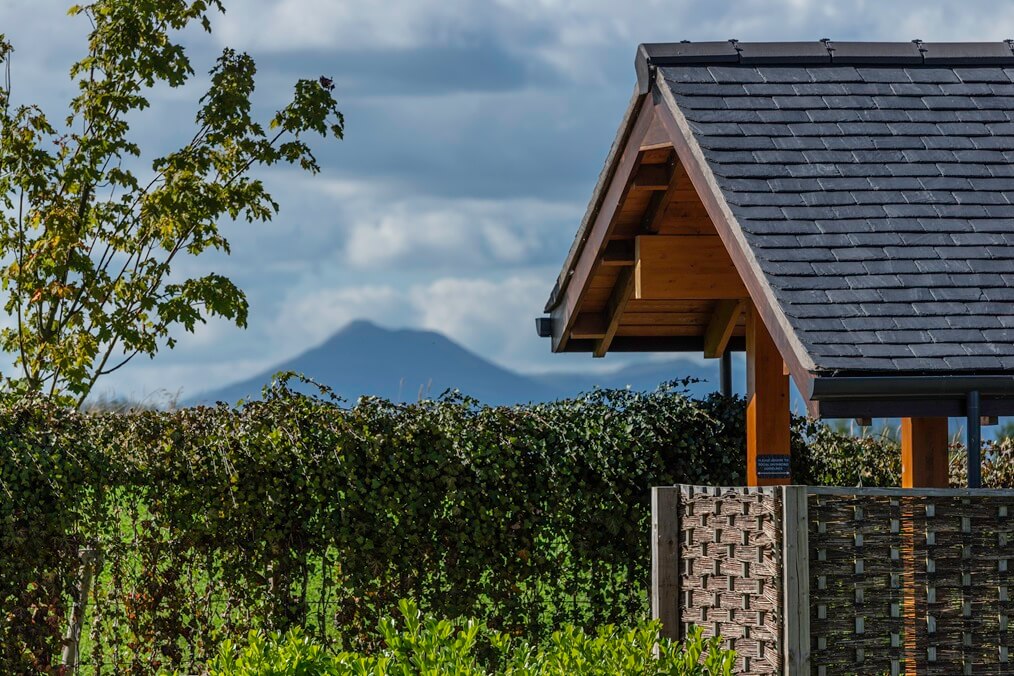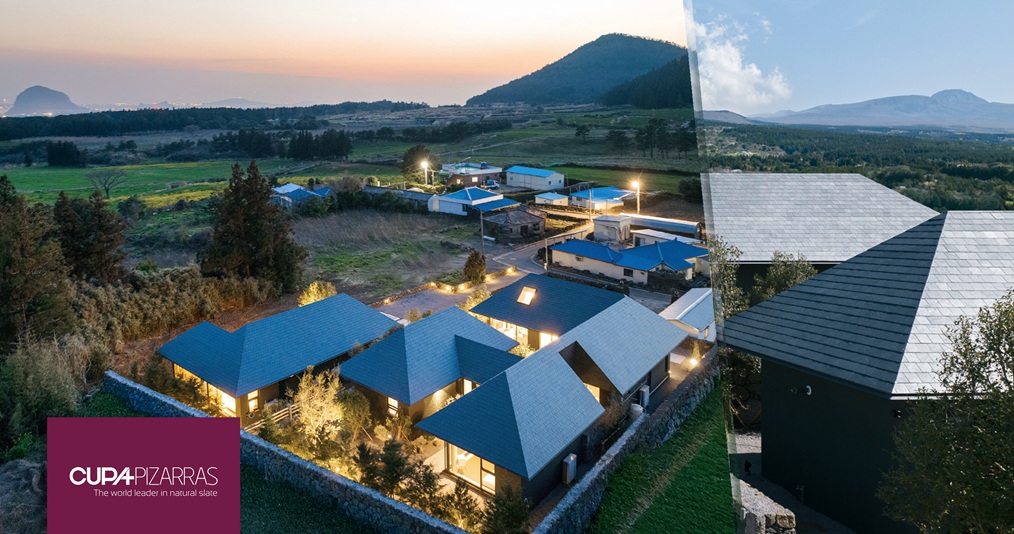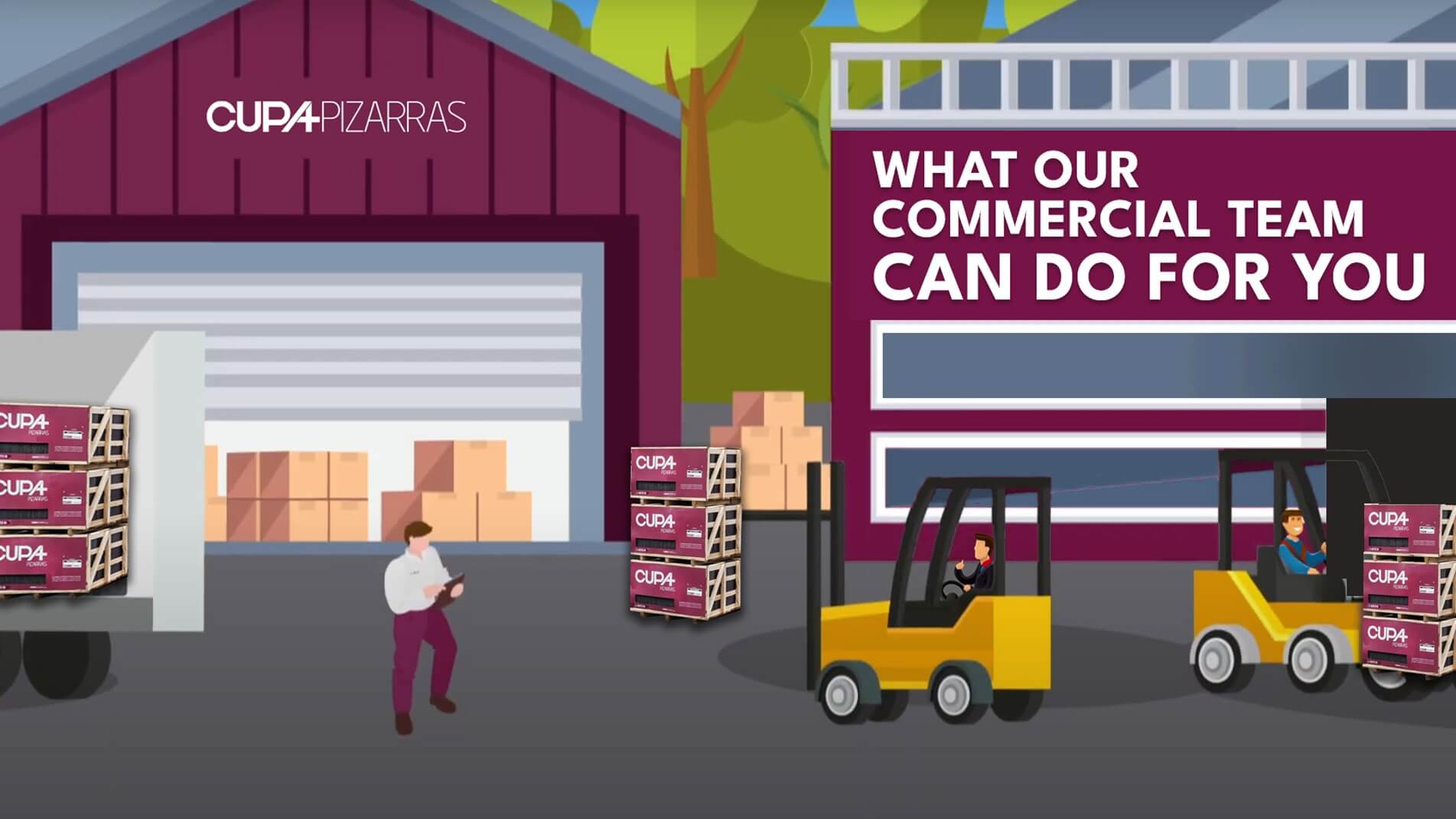Colours and types of roofing slates
As some of you may know, I have been teaching courses about roofing slate for the last few years. People that are new to roofing slate usually think that slate is a rather dull material, as to them, all roofing slates look the same. Well, we know that this is not true. Roofing slates have several colours and textures to choose from. There are three colour families and four types of rock used for roofing slates, but before getting into the detail, let me make clear the difference between a “roofing slate” and a “slate”.
A “roofing slate” is defined as a metamorphic rock that can be split and used for roofing. It is therefore, a natural construction material. On the other hand, a “slate” is formally defined as a “low-grade metamorphic rock originated from politic sediments, displaying slaty cleavage”. In other words, clays “cooked” in the nature’s oven over millions of years due to tectonic forces.
We have then a construction material (roofing slate) and a rock (slate). There are many slate outcrops over the Earth’s surface, but only very few can be mined for roofing slates. This is because the tectonic forces that have created the slate usually ruin the outcrop, cracking and fracturing the rock. In summary,
Not all slates can be used for roofing, and not all roofing slates are slates.
As we are going to see now, most roofing slates are slates, but there are other metamorphic rocks used as roofing slates.
Colours
Let’s take a look at the colours. Colour is the consequence of the minerals forming the rock, and in turn, these minerals are the result of the chemical conditions during the sedimentation of the primary clays. As pointed before, we have three colour families: black-grey, green and purple-red.
Black-grey
Black-grey roofing slates are the most common, representing about 90% of the world’s production. The colour is given by small proportions of organic matter (coal).
Green
Green colour is given by clinochlore, a mineral whose name has the Greek root “chloros”, meaning green.
Purple-red
Finally, purple-red roofing slates have their colour from hematite, or iron oxide. The iron oxide is disseminated on the rock matrix, dying it.
Colour means much more than just aesthetics, it is the result of the oxidizing and non-oxidizing conditions during the sedimentation.

If you have non-oxidizing sedimentary environment, organic matter will be preserved, together with some minerals that only are stable under these conditions, iron sulphides (pyrite).
If the environment turns to be more oxidizing, organic matter will disappear, but still you may have some iron sulphides. Lastly, if the environment is oxidizing, iron sulphides will transform to iron oxides. This roofing slate cannot oxidize, since all iron sulphides are gone.
As you can see, we have gone from black to green to purple slates.
Colour is then telling us something about the mineral content and the oxidation potential of the roofing slates.
Types of rock
Besides colour, we also have the type of rock, or lithology. But first, remember that in order to have a roofing slate, we need slaty cleavage, a special type of cleavage developed in fine-grained rocks. Without slaty cleavage we cannot obtain shingles.
Most of roofing slates are indeed slates, but there are other rocks involved. These rocks are from a metamorphic range, i.e. metamorphic evolution from slightly metamorphized clays, named metalutites, to slates, then phyllites and finally mica-schist.
After mica-schists, the metamorphic grade is so high that the rock loses the slaty cleavage and cannot be split into shingles. Let’s take a quick look to these lithologies along the metamorphic range.
Metalutites
Metalutites are rocks that have just developed the slaty cleavage. Their surface is matt and rough, and usually cannot be split into very thin shingles. The most known example are the Brazilian roofing slates.
Slates
Slates are the lithology for roofing slates by excellence. Their metamorphic grade and the development of the slaty cleavage are optimal. There are many examples of these rocks, such as the roofing slates from France, Germany or Spain.
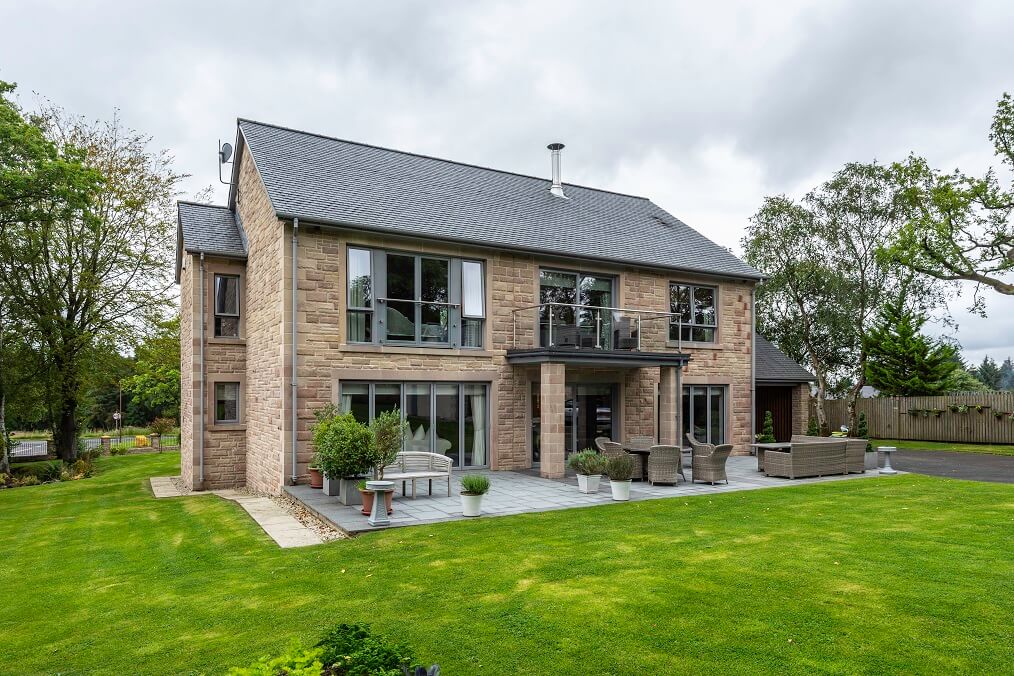
Phyllites
Then we have phyllites, which are more crystalline than slates and equal in properties. We can find these rocks in some parts of Spain, Argentina and Scotland.
Mica-schists
Finally, we have mica-schists, in which the metamorphism is beginning to interfere with the slaty cleavage, so these rocks are usually split into thicker shingles, very popular in Norway and Sweden.
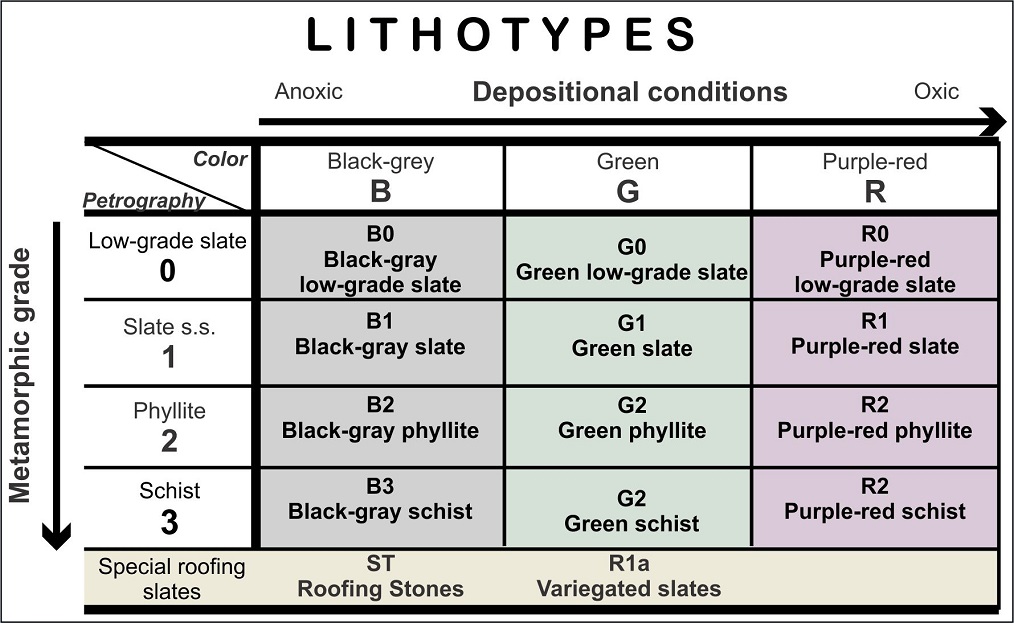
Categories
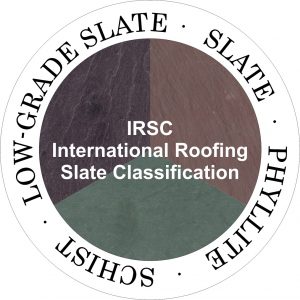
If we combine the three colour families and the four rock types we obtain twelve categories. The colour families are coded as B for black-grey, G for green and R for purple-red, and the rock types are 0 for metalutites, 1 for slates, 2 for phyllites, and 4 for mica schists.
Thus, a roofing slate coded as G2 is a green phyllite, B3 is a black-grey mica-schist, or R1 a purple-red slate. These codes form the International Roofing Slate Classification (IRSC), which is very useful to define the type and hence general properties of each roofing slate.
Do you have any questions? Leave us a comment in our social media platforms.
Further reading: Cárdenes, V., et al. (2020). Definition of Roofing Slate Lithotypes for an International Roofing Slate Classification. Key Materials in Engineering, 848, 48-57.

